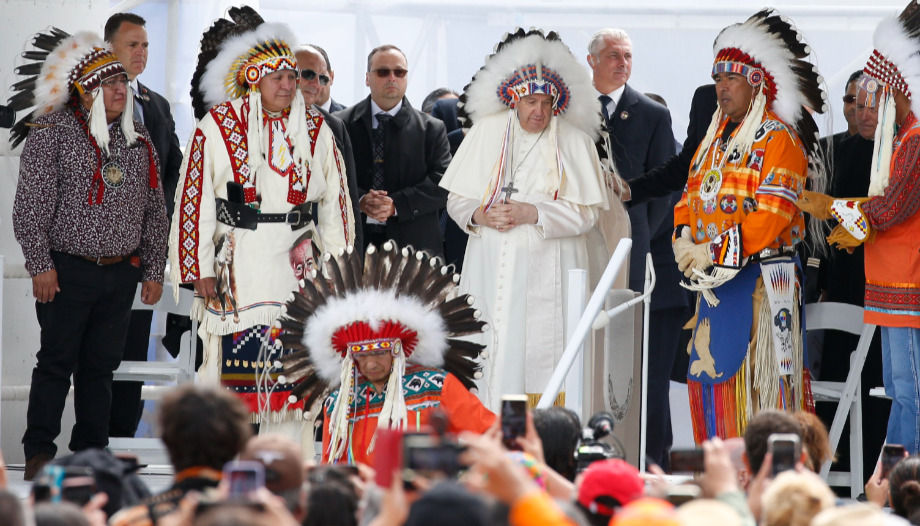On October 4, director Gianfranco Rosi presented a film dedicated to the international travels of Pope Francis during the first nine years of his pontificate. The work was included out of competition in the 79th Venice Biennial Film Festival and as of this date is available in 190 movie theaters and more than 100 parish theaters.
The author is a documentary filmmaker, who already won the Golden Lion in Venice in 2013 with "Sacro GRA" and the Golden Bear in Berlin in 2016 with "Fuocoammare", and on this occasion he took on an unprecedented challenge in making a film based, for the most part, on images from the Vatican archive relating to the apostolic visits made by the Pope. Therefore, it was not shot by him.
The author's intentions
The author explained that he wanted to make a work that would follow the Pope in movement, accompanying the viewer on a pilgrimage to the places of the dramas of our time, between Lampedusa and Iraq. A film that wants to be "a tribute to those who try to change something" and that, Rosi hopes, will be "seen in the cinema, in the dark and on the big screen".
Through the Pope's gaze and the themes he addresses in his speeches, the interest was to draw a map of the human condition, illustrated through the Pontiff's travels around the world. So far he has made 37 trips, from Brazil to Cuba, from the United States to Africa, to Southeast Asia, visiting a total of 59 countries.
The large amount of material available (800 hours of images in total) has been synthesized in eighty minutes. The director has made a personal reading of the great material at hand, with the conviction that in the images is the portrait of a man who makes us look beyond, and reflect on universal themes. In his choice of images, he adds unpublished images that he himself filmed when he was invited to accompany some of the papal missions.
Video topics
The itineraries of "In Viaggio" follow the red thread of the central themes of our time: poverty, nature, migration, the condemnation of all wars, solidarity. Little by little, the story of what the world is today is pieced together. Rosi shows the Pope on the borderline, stretched out in the act of encounter with this tired humanity, bent by life.
It begins with the first apostolic journey to Lampedusa, on July 8, 2013, after a new tragedy at sea, where Francis states loudly: "In this world of globalization we have fallen into the globalization of indifference. We have become accustomed to the suffering of the other"; then we go on to describe the visit to the martyred territories of Iraq on March 7, 2021, where the Pope makes an appeal against wars: "we reaffirm our conviction that fraternity is stronger than fratricide, that hope is stronger than death, that peace is stronger than war".
Outline of the film
In a sort of Way of the Cross, Francis witnesses the suffering of the world and experiences the difficulty of doing anything else, apart from the consolation of the Pope's words and his presence. The outline of the film is extremely simple: we follow the Pope, observe what he sees, listen to what he says. By observing the Pontiff looking at the world, Rosi establishes a dialogue at a distance between the flow of the archive of pastoral trips, the images of his cinema, current events and recent history. He creates a balance between the flow of linear time and the memory of cinema.
A documentary that the director himself defined in an interview as "experimental", explaining that he wanted to make a work that follows the Pope in movement, accompanying the viewer on a pilgrimage to the places of the dramas of our time. A film that wants to be "a tribute to those who try to change something".
The Pope's description
The Pontiff depicted in the film does not stay still in Rome, but becomes a pilgrim himself and takes us to the corners of the world afflicted by the dramas of our time. The director was particularly interested in showing his travels outside the Vatican, as if through the Pope's gaze and the themes he addresses in his speeches it were possible to map the human condition.
A very evocative shot is often used: that of the camera filming the Pope from behind, in the popemobile, as he crosses the streets of different cities and places. An image that creates the idea of the Pope's impact with the world.
Another thing that the director highlights is the ability of this Pope to ask for forgiveness, even personally. In the film we see him in Canada, when he asks forgiveness from the natives in the name of the Church, but we also see him returning from Chile, asking for forgiveness personally. That - says the director - is for me a moment of great impact, because recognizing one's mistakes is something profoundly "divine".
Having had the opportunity to watch hours and hours of images of Pope Francis gave the author of the film insight into his ability to express himself on several levels: with journalists, with people on the street, with other religious authorities. "He is a Pope who addresses both believers and non-believers. I will never be able to forget," he stressed, "his look in the Philippines after the typhoon tragedy, when he met the poor."
"Everything Bergoglio says for me, as a layman, is a world that belongs to me anyway, because they are universal speeches that should be adopted by many politicians."





 Pope Francis takes stock of his trip to Kazakhstan
Pope Francis takes stock of his trip to Kazakhstan





